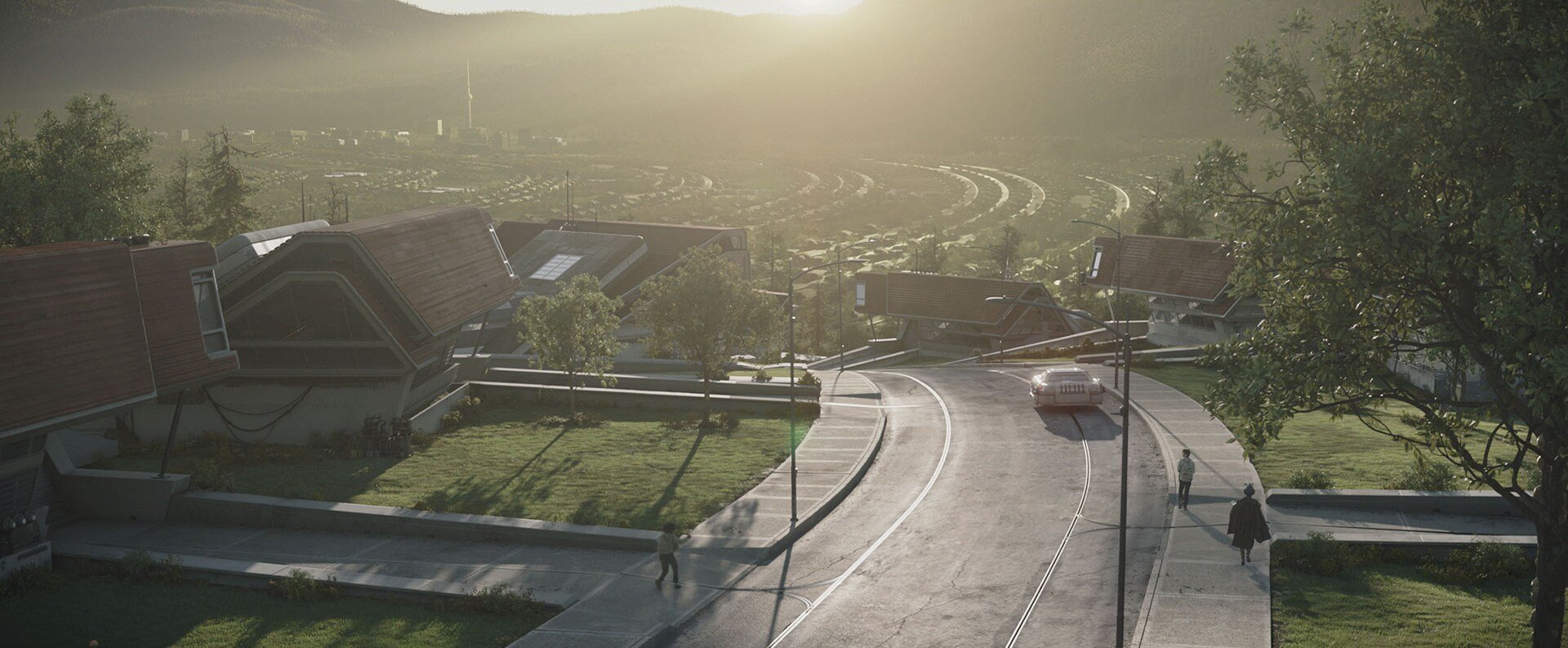Star Wars: The Skeleton Crew & Retrofuturism
(L-R): Wim (Ravi Cabot-Conyers), Jod Na Nawood (Jude Law), KB (Kyriana Kratter), Neel (Robert Timothy Smith), and Fern (Ryan Kiera Armstrong) in Lucasfilm's STAR WARS: SKELETON CREW, exclusively on Disney+. Photo by Matt Kennedy.
Image courtesy of Disney+ (© 2024 Lucasfilm Ltd™)
The data cards are in, and Star Wars: Skeleton Crew’s release has taken many by surprise with an adventure that might be one of the strongest Star Wars shows this year. Having a Star Wars show like Andor dear to my heart due to its raw, dark and rebellious storytelling; I was quite hesitant about this new release and what to expect but found myself delighted with the 2-episode premiere, which is easily summed up as pure fun.
Creators of Skeleton Crew, John Watts and Christopher Ford take us on a journey following four kids Wim (Ravi Cabot-Conyers), Fern (Ryan Kiera Armstrong), KB (Kyriana Kratter) and Neel (Robert Timothy Smith), as they make a mysterious discovery on their home planet of At-Attin which leads them on their greatest adventure yet: getting lost in a galaxy far far away.
For fans returning, it is unmissable not to notice how Skeleton Crew’s opening greets us with a nostalgic nod to A New Hope before flying us into an unseen perspective of Star Wars. We are introduced to the show's initial traction, where Jude Law was cast as Jod Na Nawood, delivers a powerful entrance leading his crew, with a sly reference to the first on-screen look of Vader’s arrival- leaving us with a promising start to his character.
However, Law does not outshine the energetic, talented group of young actors who build up the Skeleton Crew. Witty, stubborn, and easily lovable (yes, Neel I’m talking about you), the characters had me feeling retro-ready and excited to mingle with pirates, the enigmatic droid SM33 played by Nick Frost, and classic Star Wars characters.
It is easy to draw parallels to what it was like as a kid experiencing Star Wars for the first time when watching the screen burst to life as the group of kids in Skeleton Crew, who never left their home planet, are seen playing with Jedi action figures, following tales of the galaxy’s history, and of course, jump into hyperspace to witness stars and ‘weird’ aliens on their adventure.
I found myself at the end of the two episodes’ premiere, excited to see what happens next and where this story will lead us in this Star Wars timeline. Star Wars: Skeleton Crew is streaming now on Disney+.
Bonus: A Star(Wars)chitect’s Eye:
Concept art for “Star Wars: Skeleton Crew” by Jama Jurabaev. (Lucasfilm Ltd.)
With many referencing this show’s release as a mix between ‘The Goonies’ (1985) and ‘Star Wars’, Skeleton Crew takes us back to the 80s, through its production design and the play with retrofuturism.
Retrofuturism:
Retrofuturism is a cultural and artistic movement bending old-school charm and future-forward visuals and designs. Retrofuturism soared in the late 60s, often reflecting an optimistic technology-driven future.
Retrofuturism took off in cinemas through science fiction blockbuster films such as Blade Runner (1982) and of course, Star Wars (1977). Through film, retro-futurism visualises a blend of familiar modular cityscapes as space colonies, featuring flying cars and serving robots, resulting in interesting and eye-catching hybrid systems of urban living.
With films from the late 60s being mostly filmed on Earth, one could even argue cinema integrated retrofuturism as a permanent mark in history not only through its architecture but also its cultural significance. This relation is particularly interesting when studying how architecture and world-building through practical sets and locations impact our experience of both the film and these places in real life.
Sub-urban in Space
Before jumping to a buzzing cyberpunk-looking Star port, in Skeleton Crew, we are introduced to the kid’s home planet: At-Attin. A mix of Brutalism and terracotta tile-roofed villas on a hill sets us in a suburban neighbourhood that easily fits into a new republic timeline, where the Empire has been defeated and a vision of a perfect Utopian lifestyle is in place.
Co-production designers Doug Chiang and Oliver Scholl brought an authentic and nostalgic feel to the worlds of Skeleton Crew. Using real-life inspiration to build At-Attin’s cityscape, Chiang and Scholl adopted elements of retro-futuristic Brasilia and featured urban development studies in the style of architects Le Corbusier and Kenzo Tange. They also took inspiration from Brutalist designs, including ornamental elements in Soviet architecture.
Tarmac roads, front gardens, and kids playing with imaginary Lightsabers while waiting for the school bus are familiar moments in our childhood, but a fresh take on a Star Wars show. At-Attin reflects the livelihood of the children, a safe, mundane and perfectly normal daily life where one is awaiting a real sense of adventure. This return to a galaxy far far away balances a beautiful mix of nostalgia and retrofuturism.
Skeleton Crew has provided us with a change of pace, grounding us on a planet that feels and planned out a lot like ours, without the buzzing lasers and flying traffic but with a bit more foundation. I look forward to spotting what new or familiar places it takes us to next.
References:
Baver, Kristin, ( December 2024), ‘Welcome to the Worlds of Star Wars: Skeleton Crew: An Interview with Doug Chiang and Oliver Scholl’
(https://www.starwars.com/news/skeleton-crew-production-design-interview)
Guffey, Elizabeth, (November 2014) "Crafting Yesterday's Tomorrows: Retro-Futurism, Steampunk, and Making in the Twenty-First Century", Journal of Modern Craft 7.3

